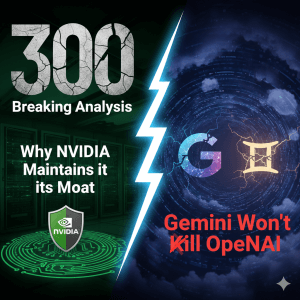 Ed Walsh, the CEO whiz kid is back doing what he does best – running a product company. This time he’s landed at Catalogic Software, a firm many people have never heard of—but probably will over the next several months.
Ed Walsh, the CEO whiz kid is back doing what he does best – running a product company. This time he’s landed at Catalogic Software, a firm many people have never heard of—but probably will over the next several months.
Walsh is a storage industry veteran who is best known for taking small, relatively unknown product-focused companies that need clearer strategy and execution chops, building a team, pointing them at a problem, gaining traction and then selling to a larger player who needs to fill a gap. Walsh touts an impressive list of successful exits as a CEO, including Avamar (EMC), Virtual Iron (Oracle) and Storwize (IBM).
There’s an interesting new dimension this time around. With previous exits, Walsh would be on to his next company pretty quickly. For instance when EMC bought Avamar, he worked at EMC for four months. He never worked at Oracle. But when IBM purchased Storwize, he spent three years at Big Blue. He also went back to school earning an MBA at MIT’s Sloan School of Management.
Why is this significant? It may not be, but combining a stint as an IBM exec with a fresh MBA from MIT could bring a new and even better style of management to Walsh’s approach. It might mean new leverage points, even deeper connections to build a team and perhaps a longer run as CEO, positioning the company for scale.
That said, Walsh is not throwing out the playbook as he immediately appointed his right hand man; Steve Kenniston (Avamar, EMC, Storwize, IBM), as VP of Marketing and Strategy for Catalogic.
Who is Catalogic Software?
Catalogic is a spin off of Syncsort, a mainframe software company that’s been around since 1969. Syncsort was rapidly sifting through Big Data decades before the term came into vogue. In 1998, Syncsort developed a data protection solution called BEX (Backup Express). It was a snapshot-based system that was ahead of its time with no clear direction or go to market muscle. In October 2013, Syncsort sold its data protection business to an investor group led by Bedford Venture Partners and Windcrest Partners. They spun off a data protection business, which became Catalogic Software. The company is now totally separate from Syncsort and Syncsort doesn’t own any part of Catalogic or its IP.
Catalogic has two products – DPX – Data Protection Express, which is a snapshot-based data protection and DR product; and ECX – Enterprise Catalog Express, a cataloguing system that consolidates and enables search, reporting and analysis of copy data. The company claims to have more than 1,000 customers and the word is over 100 employees. It won’t divulge hard numbers but with that many customers and headcount it’s likely Catalogic is doing multiple tens of millions in annual bookings. So unlike other Walsh endeavors, Catalogic is not really a startup. It has real revenue, real customers and a long history.
What’s Cool About Catalogic?
It’s somewhat unclear from looking at the company’s Website. But it appears that Catalogic has the potential to both improve and transcend backup. Wikibon has been talking for years about how backup is broken because the processes around backup were essentially designed thirty years ago and haven’t evolved at a pace with the enterprise tech business. Purpose-built backup appliances (e.g. Data Domain) was really designed to be a tape killer—and it was wildly successful. But disk-based backup relying on data de-duplication to create parity between disk and tape backup costs has pretty much run its course. The real opportunity emerging in data protection is to use a snapshot-based approach to transform data protection into a service and deliver new value beyond backup. Wikibon wrote about this three years ago but Syncsort (the company in question at the time) really never executed on the vision. Back then we said:
Wikibon believes a new model of data protection is emerging. It is based on underlying snapshot technologies, i.e., consistent snapshots will be taken on a regular basis, and the incremental data from the last snapshot moved to a separate site. The level of service can be adjusted by varying how often the snapshots are run, how quickly they are transferred offsite (mainly determined by telecommunication line speed), and how quickly the data can be recovered (quality of recovery system and amount of recovery data held locally and remotely). This allows the service to be tailored to meet the business recovery time and budget requirements. Most important of all, it eliminates the backup window. This model offers a far more flexible and cost-effective strategy to meet Infrastructure 2.0 requirements than the traditional one-size-fits-all backup window model.
Here’s the picture we put forth at that time:
It’s the Metadata Stupid!
Catalogic seems to be all about making this vision a mainstream reality. It uses the concept of “Instant Mountable Recovery.” So starting with backup – that’s fine but what about doing more with the snapped copies? In other words, when you catalog the snaps and have fast access to all the data you can start to intelligently manage the copies – i.e. what to mount for what reason – DR, Test / Dev, Analytics, etc… This enables businesses to get more value out of their copy data.
Catalogic is relying on guys like NetApp to do the “heavy lifting” – e.g. the snaps, vaulting, mirroring and the data reduction, while it provides the catalog, fast data access and the consequent analysis and reporting on the data. Catalogic is trying to complete the picture….connect the dots…fill in the blanks and get value out of all those copies hanging around. Essentially the play is to completely transform backup and extend the value proposition, introducing data protection-as-a-service and adding new value from all the copy data that’s floating around organizations.
The Landscape
It’s almost like Catalogic has a missing link to the data protection story. Wikibon has been searching for someone to execute and leverage this elusive piece of the puzzle for years. It’s not as though others are not trying. EMC has put forth and is executing on a new vision of data protection as a service that is comprehensive; and the company is slowly turning the warship in that direction. But it can’t move fast enough because it has so many stovepipes to pull together. NetApp has many of the pieces and has relied on relationships with guys like Commvault and Catalogic but neither of the former two companies has turned that opportunity into an exploding business; yet. Veeam is another one to watch in this space. Veeam are VMware specialists and not general purpose but they have a strong foothold and are doing well. And there are tons of legacy guys, most notably Symantec who have a dog in this hunt.
What to Watch
The smart money says Walsh was hired to flip the company pretty quickly. Maybe. Probably. What’s predictable is he will bring experience and alignment of strategy and execution toward a clear set of goals; driving thought leadership and getting the word out about the problem that exists and proposing a solution. Walsh will make Catalogic relevant for customers. That’s what he and his teams do. He’ll also keep building out that team.
The big question is with his IBM experience and a new perspective from his time at MIT, will Walsh aim higher? Catalogic has a larger team in place (than typical for Walsh), real revenue and a strong customer base rooted in one of the oldest software companies on the planet; with a reputation for building great products that solve very specific and hard problems. This means Walsh has more options this time around.
The value bet says he will explore those options for his board, keep them open and look for rip currents to ride.




